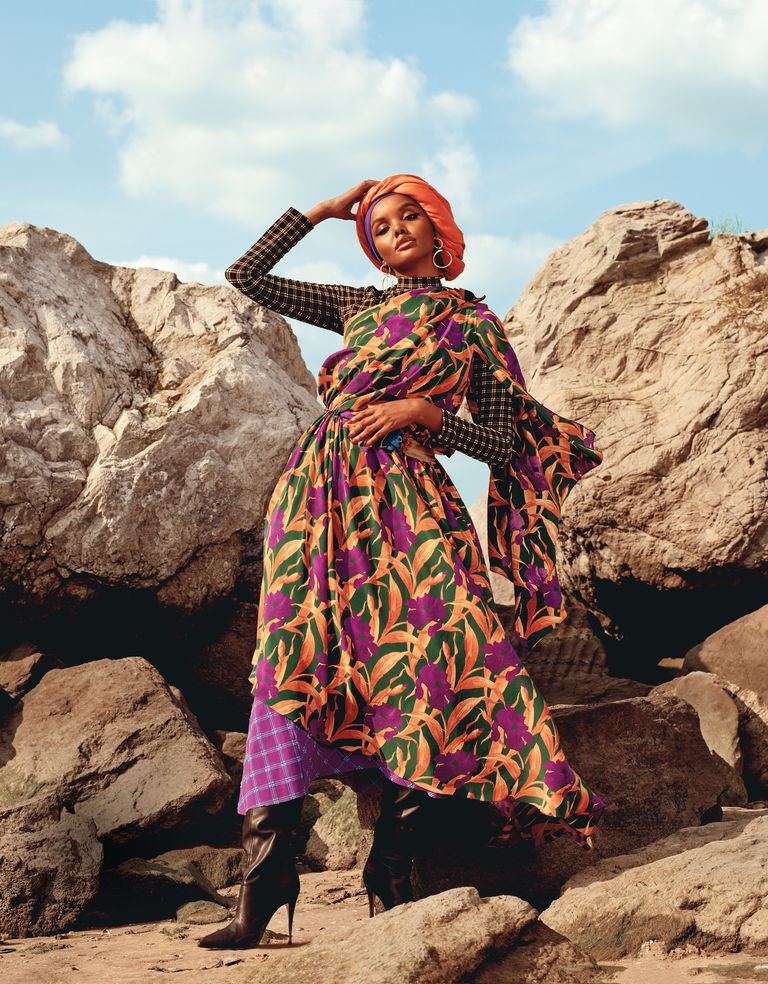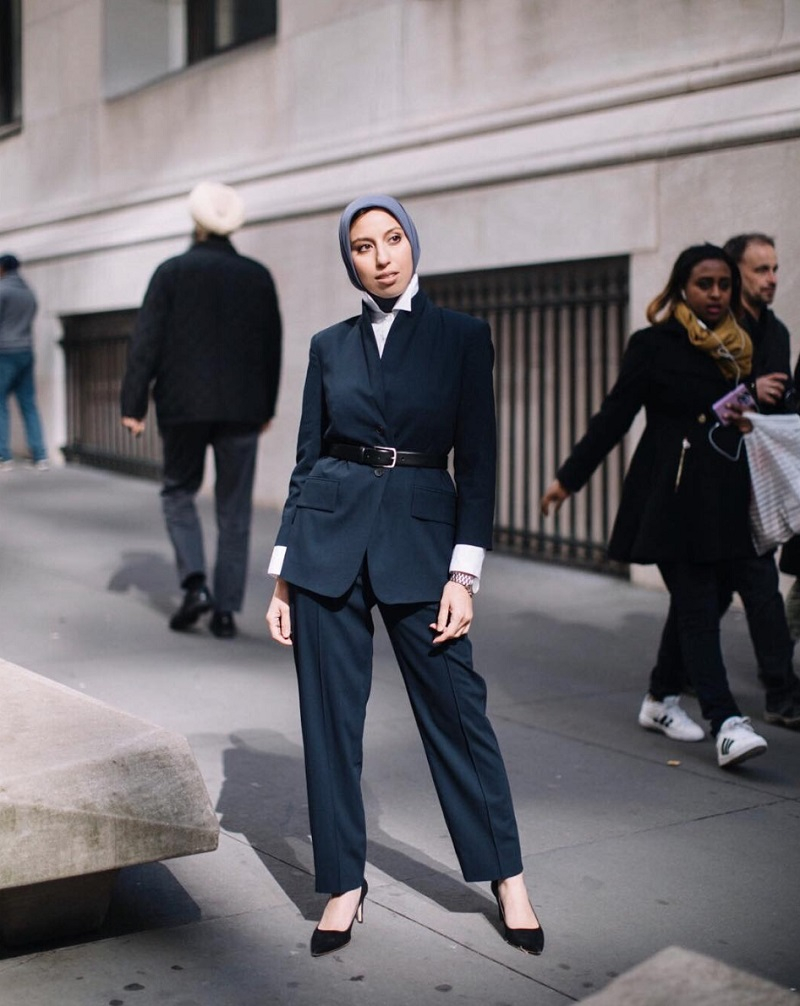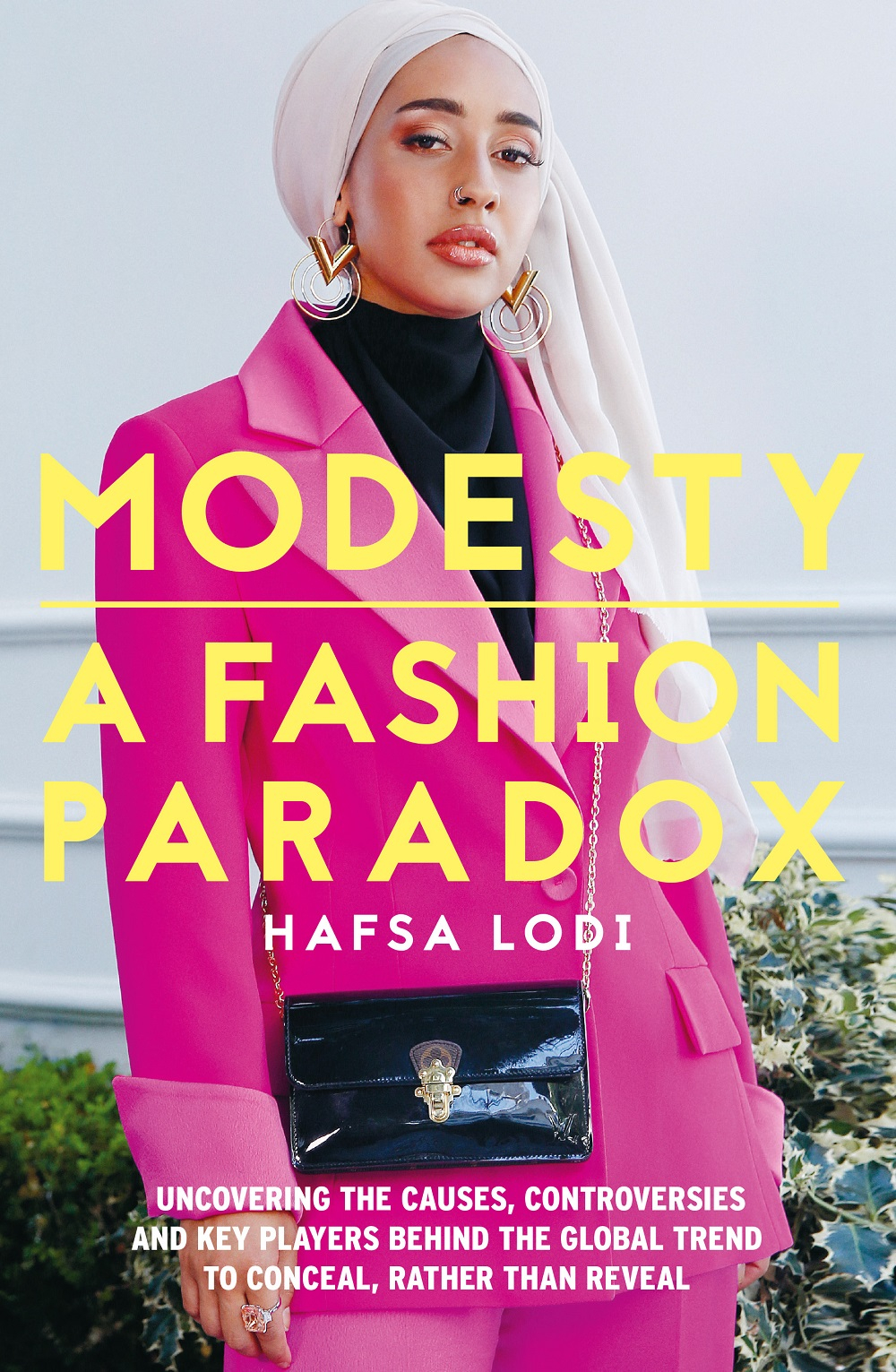Reflections of a Fashion Journalist – Is it Possible to be Modest and Fashionable?
Lifestyle
|
Mar 10, 2021
|
6 MIN READ

From a photo shoot for Hafsa Lodi's book, "Modesty: A Fashion Paradox"; L to R: Sameera Hussain, Saira Arshad, Maha Gorton, Nabilah Kariem, Rihab Nubi and Safiya Abdallah; image source: Hafsa Lodi
By Hafsa Lodi
"Should there be a question mark at the end?” My publisher and I mull over this for about a week while we finalize the title of my book, Modesty: A Fashion Paradox. We’re both quite certain that the modest fashion does present some paradoxes – the very tensions between traditional definitions of modesty and modern, mainstream modes of fashion, modeling and social media is what inspired my publisher, Neem Tree Press, to commission this project in the first place.
In the end, we decide to do away with the question mark. With that decision, our statement becomes cemented: Modesty can be a fashion paradox – and on so many different levels.
This is no new concern or debate. For decades, perhaps centuries, women of faith have experienced inner dilemmas while balancing the aesthetics and intentions of fashion and their desire to look good with the guidelines of their religions. Do commandments for modesty require them to blend in, rather than stand out? Should they avoid public platforms in order to maintain modesty?
Many conservatives of faith-based communities would answer in the affirmative to these questions. But the modest fashion movement we’ve witnessed over the past decade has brought a force of women to the forefront of fashion. These designers, entrepreneurs, models and influencers are flourishing in this market. They believe fashion can be fun, flamboyant, and promoted publicly while still being modest.
But, the journey isn’t always a seamless one, as evidenced by Halima Aden’s recent decision to quit the world of mainstream modeling. After pioneering the way for mainstream, hijabi runway models and working for top luxury brands and fashion publications – even appearing on the pages of Sports Illustrated donning a burkini – Halima announced that she was leaving mainstream fashion because she didn’t feel it respected her hijab. She had spent years jet-setting around the globe for various shoots, runway jobs and event appearances, and the pandemic gave Halima some down time to pause and self-reflect.

Former model Halima Aden in an Elle magazine fashion shoot.
In a series of Instagram Stories, she posted images of some of her past jobs where her head covering was tied in ornate ways that, after reflection and engaging with her family and community, she now believed didn’t comply with her values of Islam. Overall, Muslim women worldwide applauded Halima’s decision to take a public stance against the industry, commending her for giving up many lucrative opportunities to stay true to her personal convictions.
Models like Gigi Hadid and fellow hijabi Ikram Abdi Omar also expressed their support for Halima. On the other hand, some Muslim women saw nothing wrong with the headscarf styles that Halima was now rejecting, highlighting the fact that approaches to modesty are personal and diverse, even within Muslim communities.
Styles of head coverings are just one of the many areas of contention between modesty and fashion. Chapter 8 of my book, Modesty: A Fashion Paradox, explores the many ways in which modest fashion may present a contradiction of sorts. Some traditionalists (in both Muslim and Jewish faiths) for instance, focus on color, believing that red tones do not comply with modesty as they are eye-catching.
Brooklyn modest fashion photographer Nicole Najmah Abraham provided some perspective on this debate, explaining these beliefs differ depending on a person’s background and heritage. “Color and pattern are associated with regions and cultures,” she stated in an interview for the book. “You go to West Africa, for example, and modest women [wear] prints and colors. The whole area consists of women dressed modestly in this way. So if a woman wore all black in this region, she would be bold, standing out more than a woman in bright African prints.”
New York hijabi model Wafeeqa Azeem echoed this sentiment when I interviewed her. “I would not associate wearing bright colors with being non-discrete versus wearing muted colors with being discreet. I can guarantee you it is possible to wear bright colors and not stand out – many of us [in America] stand out when we wear muted colors,” she explained.

Haute Hijab CEO Melanie Elturk
“People interpret [modesty] through the culture that they live in,” said Haute Hijab CEO, Melanie Elturk, in an interview for the book. “The way that people dress and interpret the hijab differs greatly if you’re in America, versus in the Middle East, versus in Russia, versus in Africa, versus in Malaysia. I mean it’s so different, so when [people] see something that’s outside of their norm and outside of their paradigm, it’s difficult for them to accept.”
There’s also the unavoidable element of consumerism and how spending on superfluous fashion may contradict the ideals of modesty – there have even been fundamentalist fatwas deeming “designer” abayas to be sinful. Then there’s the prospect of parading fashion publicly, be it on runways, in magazines or on social media, which presents another apparent tension between modesty and fashion. Most of the women I spoke to while researching for my book believed that intent plays a critical role – some even described modest fashion as a form of dawah, as it can help make Islam appear more inviting and approachable in contrast to the negative and intimidating images we’re so used to seeing in the mainstream media.
Perhaps there’s a middle ground, as proposed by Wafeeqa: “I feel like the media has dragged us through the mud and back as a religion,” she said. “They have made us seem barbaric, unapproachable and unrelatable. With the emergence of modest fashion I feel we are able to put forward a different narrative, one of being relatable to every other female out there. It has made both men and women see the beauty in the hijab and Muslim women.”
As a journalist, I’m accustomed to exploring all possible angles of a subject and interviewing parties on all sides. This is the approach I took with Modesty: A Fashion Paradox in talking to various modern Muslimahs but also engaging with the arguments of more fundamentalist traditionalists, broaching the topic with representatives from Jewish and Christian communities and citing the work of academics in the field. Still, I’m often asked – “so is modest fashion a paradox?” In light of Halima’s departure from mainstream fashion, it is a discussion that’s becoming more prevalent.

Modesty: A Fashion Paradox by Hafsa Lodi
I wish I had a concrete answer; a fixed and unwavering point of view. From a faith-based perspective, which, as a believing woman, is my constant frame of reference, I often observe and personally witness continuous tensions between fashion and modesty. You can dress modestly and stylishly, and present yourself as an empowered, fashion-forward Muslim woman. But when you have a camera roll full of images of yourself, obsess over how you look and experience anxiety over the numbers of likes and comments you get once posting them on Instagram, your modest intentions have the potential to grow murky.
I do believe there is a grey area somewhere in there where modest fashion can thrive holistically. But after a decade of being a Muslim fashion journalist, it’s time for me to acknowledge and accept that fashion is a worldly temptation – and in excess, it’s not unlike a drug. It can become an unhealthy obsession – not only wearing and consuming it, but also analyzing, judging and commenting on the fashion choices of others.
For at the crux of the conversation on modest fashion is the simple conclusion that, just as approaches and interpretations of modesty are diverse and personal, so are answers to the question, “is modest fashion a paradox.” It’s up to each of us individually to wade through the waters of modesty and strike a balance in which we feel comfortable and confident.
Hafsa Lodi is a fashion journalist and the author of Modest: A Fashion Paradox. As one of the pioneers of mainstream modest fashion, Haute Hijab’s Melanie Elturk is one of the 40+ trailblazers interviewed in Modesty: A Fashion Paradox, which celebrates its first anniversary this month. Buy the book online on Amazon here. Or, you can purchase the book at a 40% discount for Haute Hijab by clicking here (or here if you're in the U.K.) and using the code HauteHijab40.
Subscribe to be the first to know about new product releases, styling ideas and more.
What products are you interested in?

